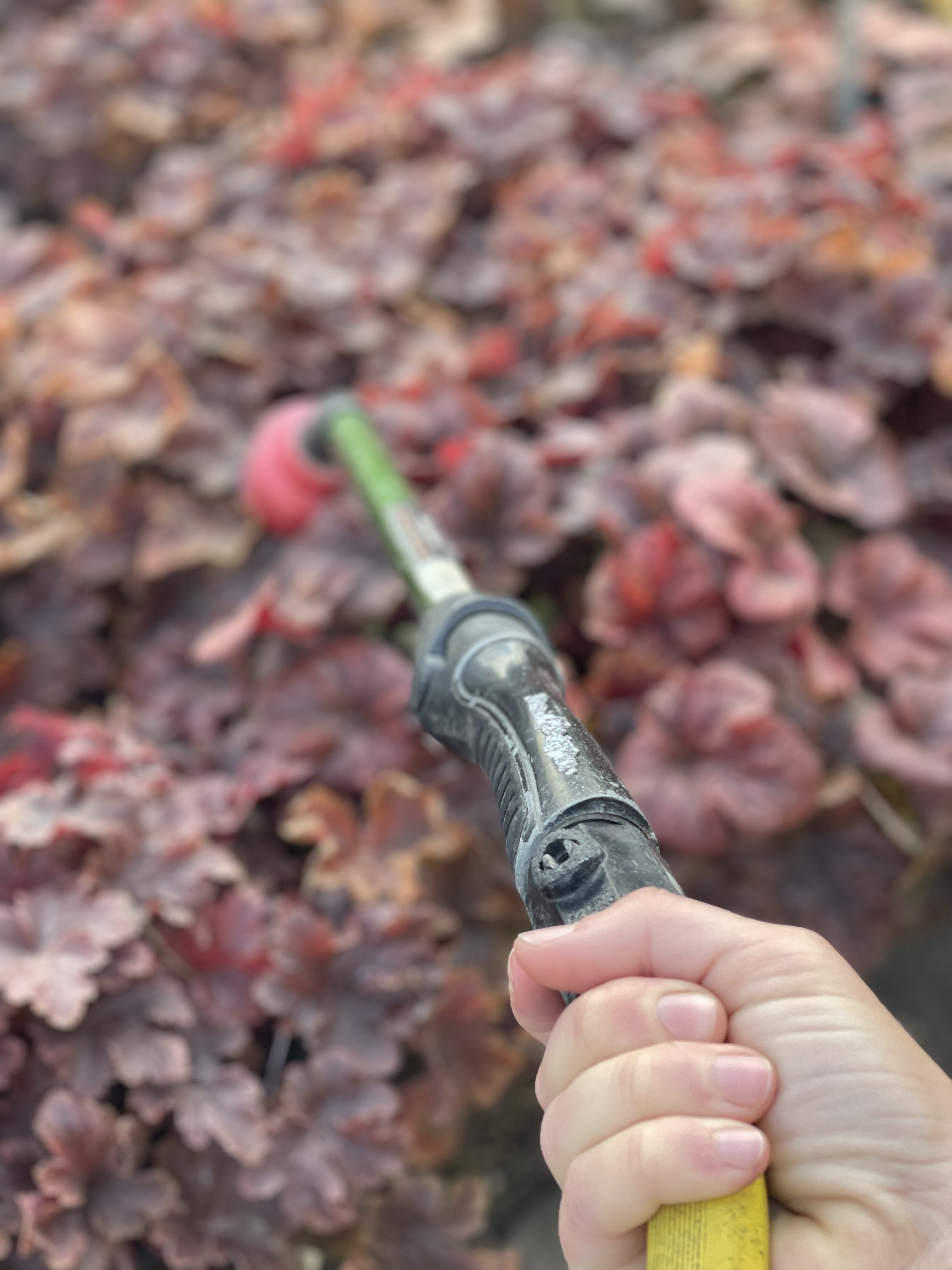As a gardener, the winter offers us a bit of a respite from our outdoor gardening chores. We have cleaned and sharpened our tools, raked or mulched leaves and look forward to poring over the internet (or seed catalogs, which I still receive and love) looking for what we’re going to be planting in the Spring. Most don’t think about the newly planted perennials and trees in the lawn and landscape about needing water during the coldest months. While some plants in our area can expire from the cold weather, usually it’s because of moisture loss that causes their demise. Wintertime watering needs to be looked at as a matter of course to care for your new, and even some established plants.
When do I water, and how much?
While the amounts vary from one plant to another, it’s generally acceptable to water your new plants once a month during the winter months. This supplemental watering is becoming a necessity, as we’re getting much less wintertime precipitation now than when I was a younger human. When we have a period of a few warmer than average days, I’d recommend pulling out a hose! Turn your water on to the diameter of a pencil, and place at the root zone of your plant for about 20-30 minutes per tree, and about 5-10 minutes for new shrubs. 3-5 minutes is typically enough for newly planted perennials.
What is desiccation?
When the ground starts to freeze, the roots of plants cannot take up moisture, regardless of the amount of snowfall. Because of this, the plants use the moisture stored in the stems and leaves as a part of the transpiration process. Transpiration is the process of water movement through the plant, and its evaporation from its aerial parts (stems, leaves, and flowers). Keep in mind that plants only utilize about 0.5-3% of the water it takes up from the soil for growth and metabolic purposes, the rest is lost due to transpiration. With increasingly warmer wintertime temperatures and less snowfall in KC, the transpiration process on plants continues for a longer period now than it did many years ago, which is the reason why winter watering is so important. When a plant transpires more water than what’s available, desiccation starts to occur. Desiccation is the removal of water from a plant, resulting in injury or death. When plants don’t have a supply of water to replenish themselves, it becomes desiccated.
Winter Watering for Evergreens
Evergreens are especially susceptible to desiccation, as they do not drop their leaves for the Winter. Aside from proper watering practices (watering the plant thoroughly before the ground starts to freeze and checking for moisture as the ground thaws again) using an anti-desiccant is recommended. In essence, this product helps slow the transpiration process during the winter months, helping reduce the plants from losing moisture through the leaves or needles. Evergreens such as holly, boxwood, rhododendrons, and azaleas, and evergreen magnolias all benefit from the use of an anti-desiccant. Apply to your plants when the temperature starts to drop consistently below freezing. It’s best to apply during the day, that is above freezing, with no rain or snow in the forecast for at least 24 hours. This allows the product to dry on the plant.
In Closing
Learning about the transpiration process, how water is stored and utilized by plants during the winter months, has helped you understand why this practice is so important! As always, if you have additional questions, please come and see us at Colonial Gardens!
Written By 'Trav the Tree Guy' Morcha




